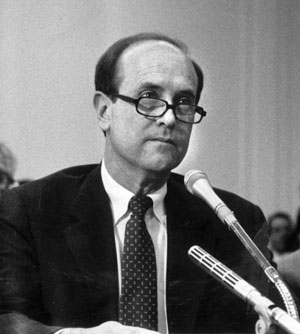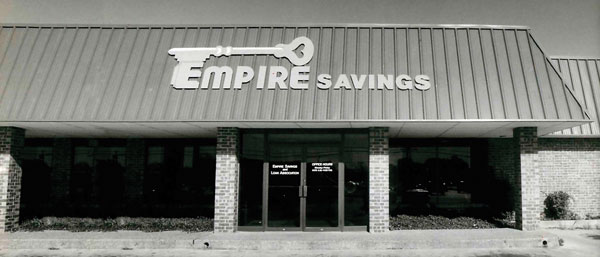March 14, 1984: The savings and loan crisis begins

Chairman Spencer Blain at a congressional hearing on the failure of Empire Savings and Loan. DMN File Photo.
Taking advantage of federal deregulation in the industry, Empire had built a highly profitable portfolio of real estate loans by all but ignoring traditional due diligence and long-term lending in favor of high-interest construction loans. But as they became more familiar with the dynamics of Empire’s success, regulators came to realize that it was based on what one later called “one of the most reckless and fraudulent land-investment schemes this agency has ever seen.”
The early ’80s had been unkind to traditional savings institutions. Since the Great Depression, thrifts had been confined to low-interest home mortgages. But a three-year surge in inflation that soared as high as 14 percent left the highly regulated thrifts whipsawed by federal restrictions—both on interest paid to depositors and the kinds of loans available to borrowers.
In 1982, in an effort to help savings institutions grow out of their plight, Congress passed the Garn-St. Germain Depository Institutions Act, freeing federally insured thrifts from many of those limits. Almost immediately, Empire chairman Spencer Blain initiated a frenzied program of high-interest commercial lending for thousands of units of condominium construction, mostly concentrated in the nearby I-30 corridor. And over the next year, an ever-expanding group of borrowers passed through Empire, signing to take on millions in debt in a highly organized paper-passing process designed to fuel the ongoing construction bubble.

Empire Savings and Loan’s reckless and fraudulent high-interest commercial lending practices paved the way for the construction of thousands of condominium units in Texas, most of which had to be bulldozed. Photograph by David Woo/Dallas Morning News.
The fundamental elements of the process were simple. A developer would option a piece of undeveloped land, then inflate its value by passing the parcel through a string of insider sales to a small group of developers—as many as eight in a single day. Meanwhile, the land was subdivided into smaller, 2-acre parcels and ultimately sold off to a string of straw buyers at highly inflated prices, all financed by Empire at interest rates as high as 18 or 19 percent. Empire earned millions in lending fees and commissions. The developers earned millions from the “land flips.” Even the straw buyers walked away with cash—proceeds from their Empire loans.
By the time the pyramid-style scheme came to a halt, more than $300 million had vaporized from Empire. Hundreds of unfinished condo units littered the landscape of eastern Dallas County. About 120 participants were prosecuted and convicted. And Empire became the first-ever savings institution closed due to fraud.
But the damage was only beginning. The fraudulent Empire loans had already metastasized to other institutions. Even worse, the ease with which the fraud had developed at Empire exposed to regulators the potential for abuse elsewhere. It took nearly five years for the extent of widespread savings and loan fraud to become fully appreciated, but by 1989 nearly a third of the nation’s 3,234 thrift institutions worth more than $400 billion had been closed or merged; their governing agency, the Federal Home Loan Bank Board, had been dissolved; and more than $160 billion—most of it taxpayer-supported—had been spent to resolve the plague of fraud in the deregulated thrifts.



